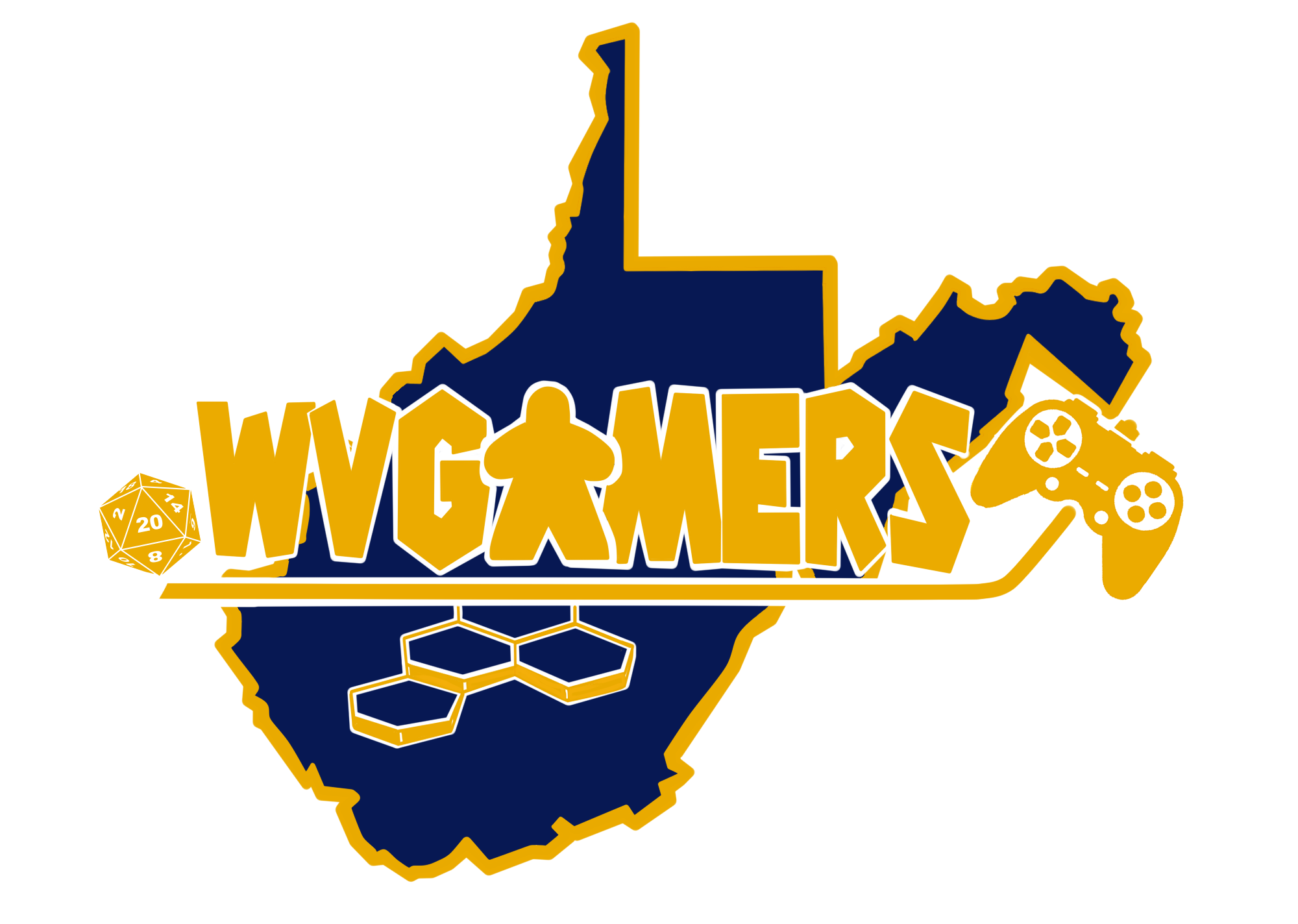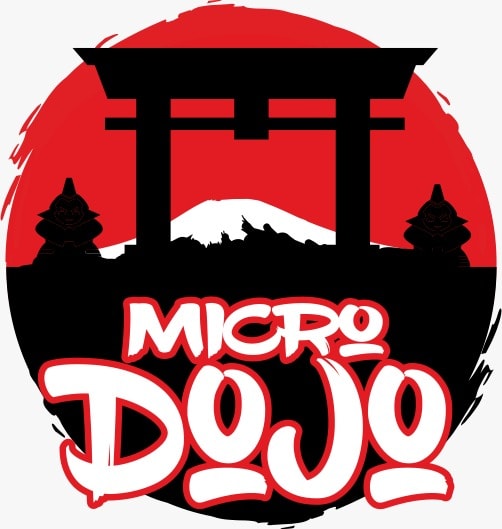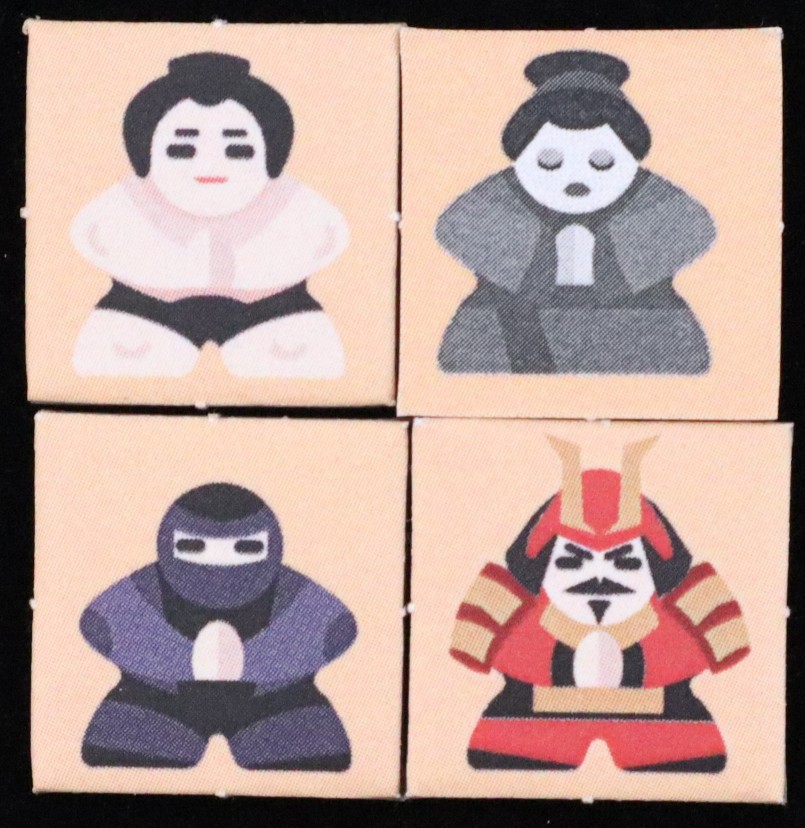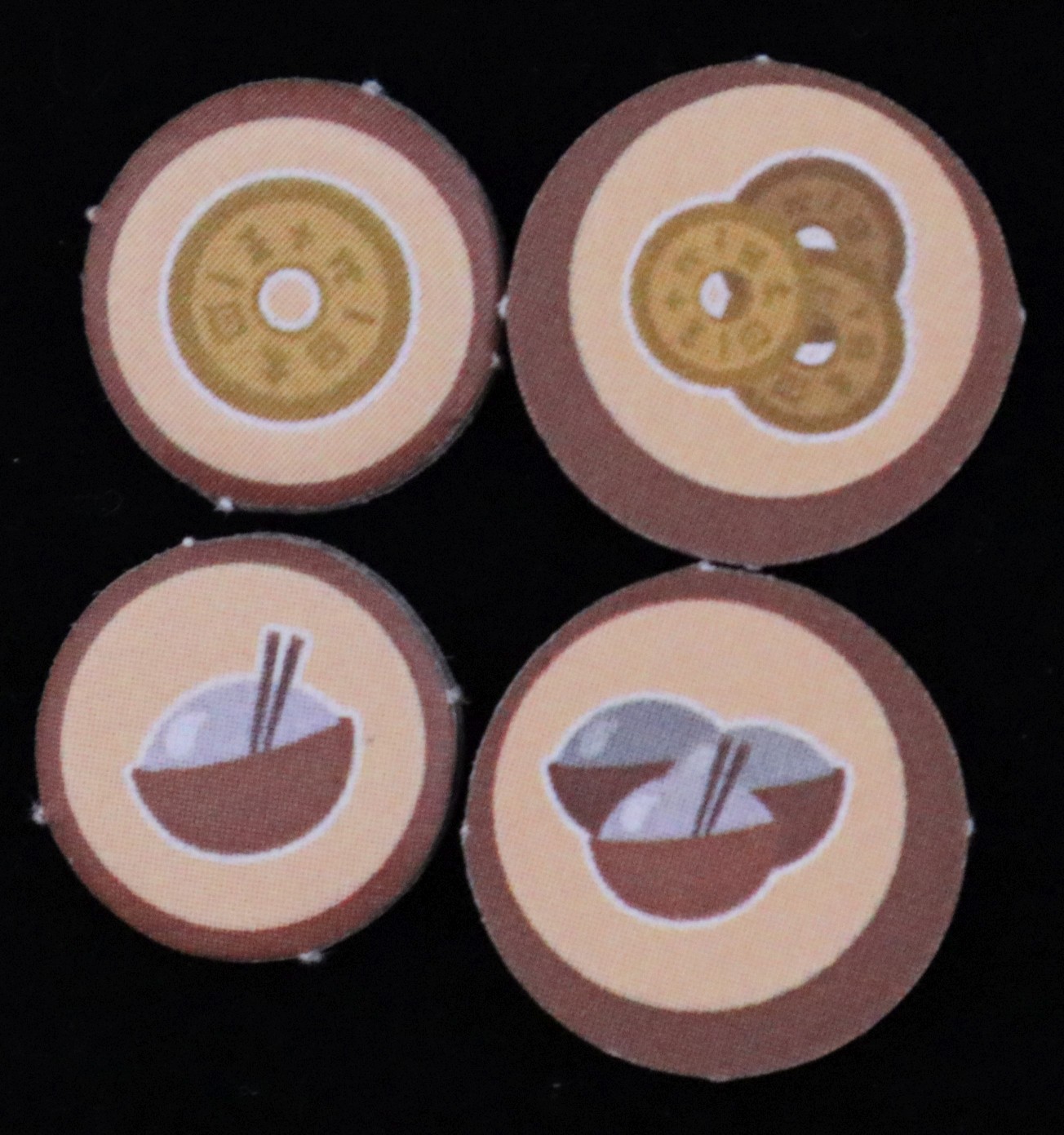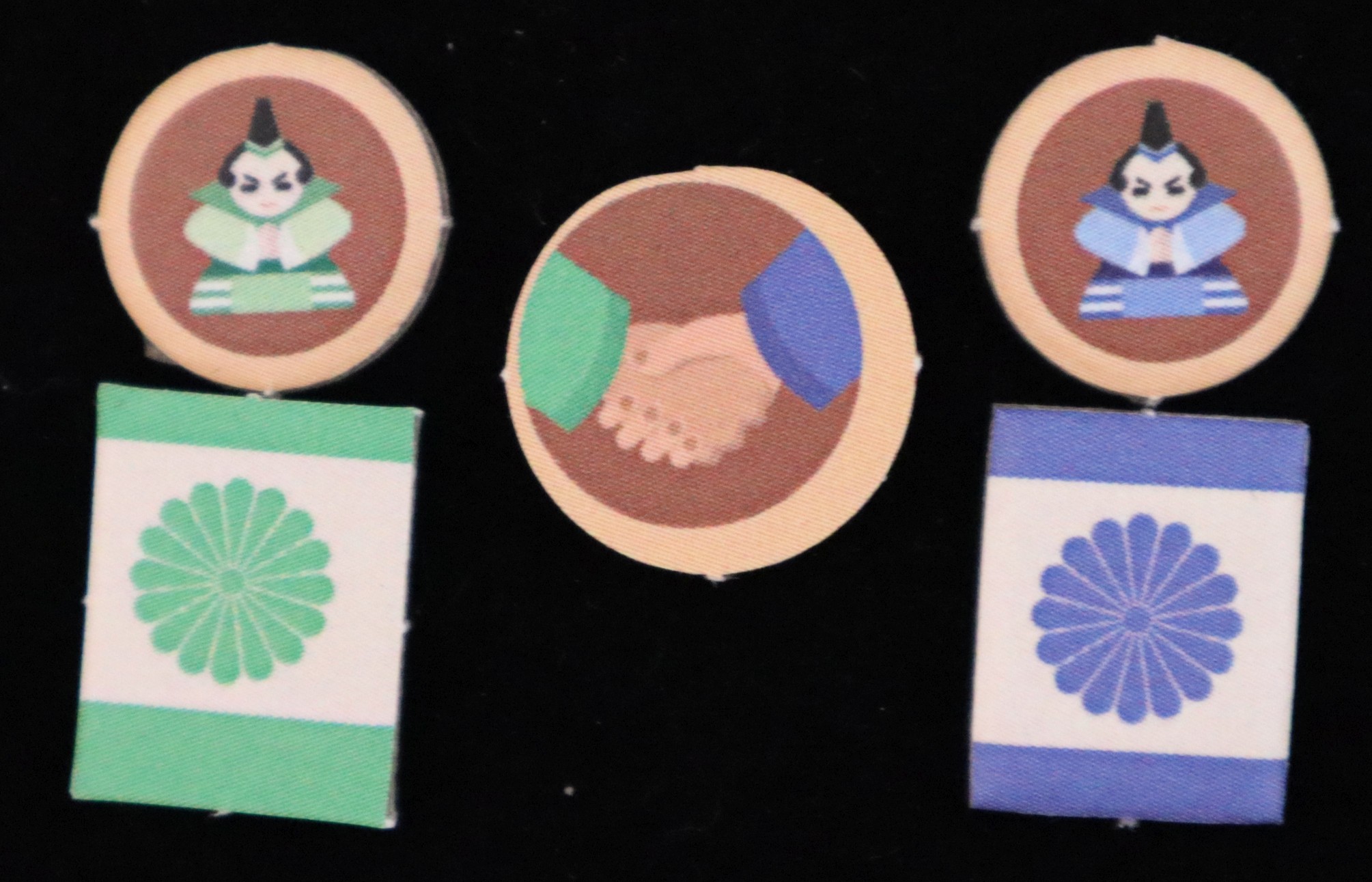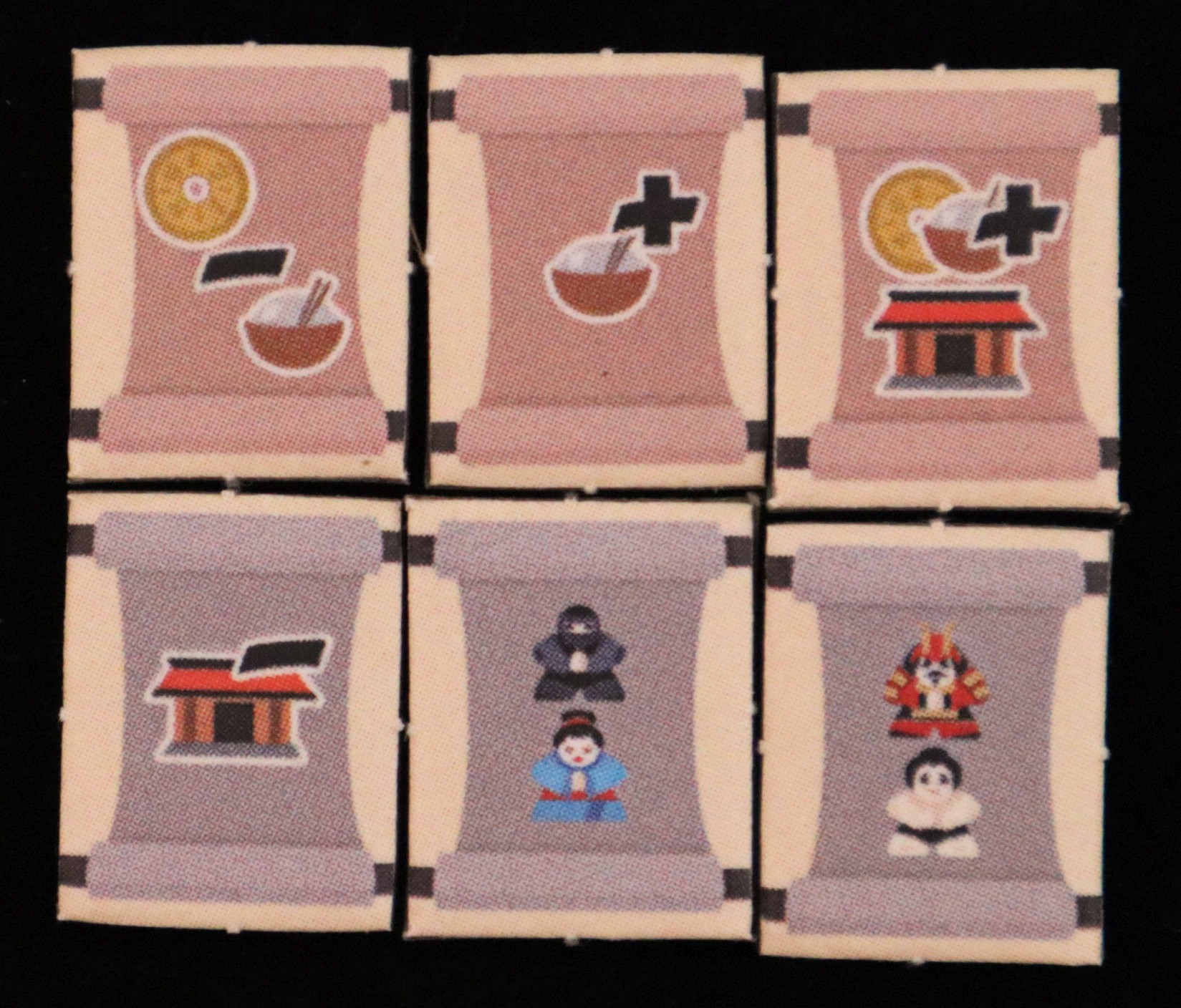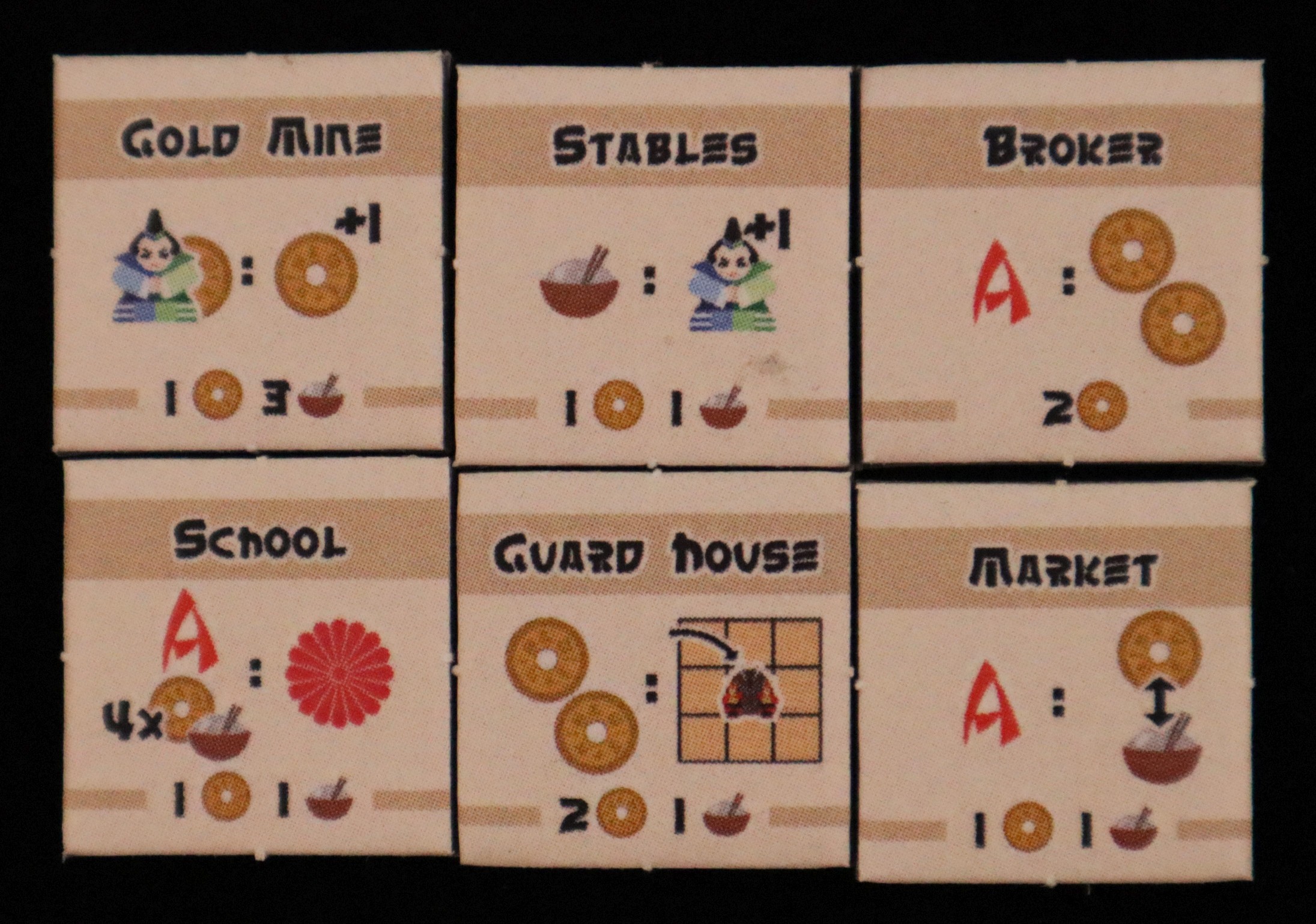Are you the Shogun's most loyal Daimyo?
| Micro Dojo | |||||
| Designer(s) | Ben Downton | Artist(s) | Publisher |
Prometheus Game Labs |
|
| 2 | 14+ | 30m | |||
So many games want to compete for space on your shelf and that of retailers; not many games are crafted to do just the opposite. Micro Dojo is a very compact game that, once all punched out of the chip board, will fit nicely in a single baggy. It is a really straight forward and easy to learn game with a lot of potential strategy once you have played a time or two and see the rhythm of the game. The designer seems very connected to the project and is very vocal about it on social media.
Let's take a look at this wonderful passion project.
Box and Components
Everything within this game will arrive on a single chip board and a single sheet of paper for the rules. So, while the graphics may change slightly from this prototype and the final version, I am fairly confident this is fairly representative of what you can expect from this game.
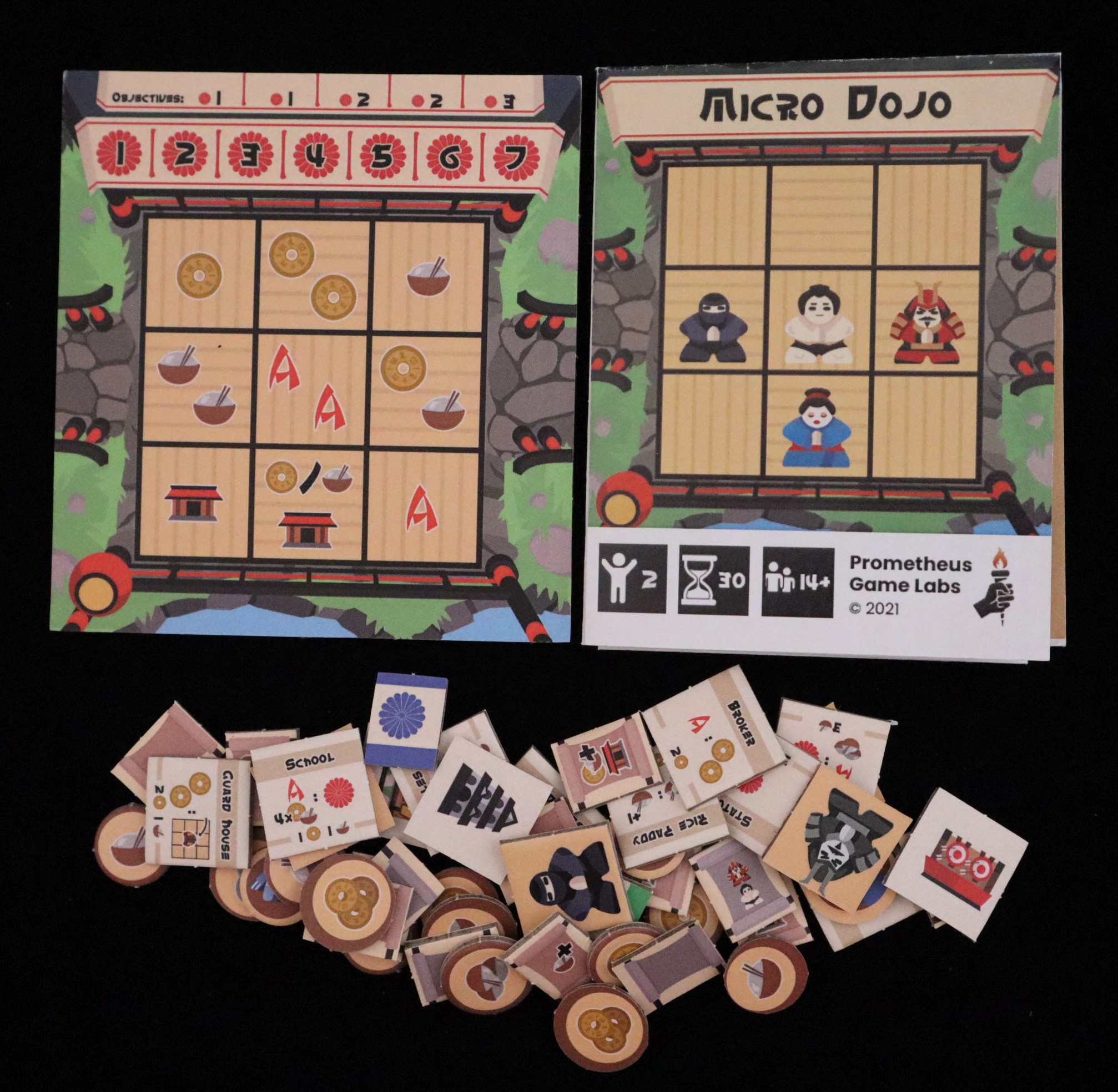 The game includes the following on a single chip board:
The game includes the following on a single chip board:
- One Game Board: The game board consists of a 3x3 grid, 1-7 Victory Point (VP) track, and 1-3 Objective Track. The board is double sided with the same contents on each side.
- One Influence Token: This is provided to the second player and provides them a one-time ability during the game.
- Two Daimyo Markers: These will be placed on top of the Meeples Tokens the players move around the board to keep track of their previous action.
- Two Score Markers: Match the Daimyo color used to keep track of the players Victory Points (VP) on the game board.
- Four Meeple Tokens: These are used for moving around the board. They are double sided, but the colored/non-colored sides only matter in the advanced game rules.
- Twelve Building Tiles: These are available for purchase during the game; these will provide either instant perks, ongoing perks, or abilities in exchange for an action.
- Seven Food Tokens (Four Single and Three Triple tokens): Resources turned in for purchasing buildings and VP. There is a total of 13 food in the game.
- Seven Gold Tokens (Four Single and Three Triple tokens): Resources turned in for purchasing buildings and VP. There is a total of 13 gold in the game.
- Nine Objective Tokens: These are the main source of VP in the game typically requiring you to have the most of a type of resource (gold, food, and/or buildings).
- Five Advanced Objective Tokens (mine had 5): Objectives used for the Advanced Rules.
The tokens are pretty solid overall. It helps that everything is so small that they won't easily bend with the exception of the board, but you would really have to try to bend it. The images really pop on the backgrounds though there are a few graphics like the brown objective scrolls that make some of the icons a little more difficult to see. If the tokens were bigger, I doubt this would be a problem, but that would defeat the purpose of the "micro" nature of this project. This won't be an issue for most people, but you will want at least one person play who can easily identify the icons on the tokens.
The rules come on a single sheet of paper with rules on both sides, and the rules are folded such that there are 9 sections each with portions of the rules. The front of the sheet basically lays out how to setup the game, the objective, and player turns; the back of the sheet will provide the legend/glossary of the buildings, objectives, and the advanced gameplay options. Everything is very well structured making it very easy to find exactly what you are looking for without too much effort.
Mechanics
Setup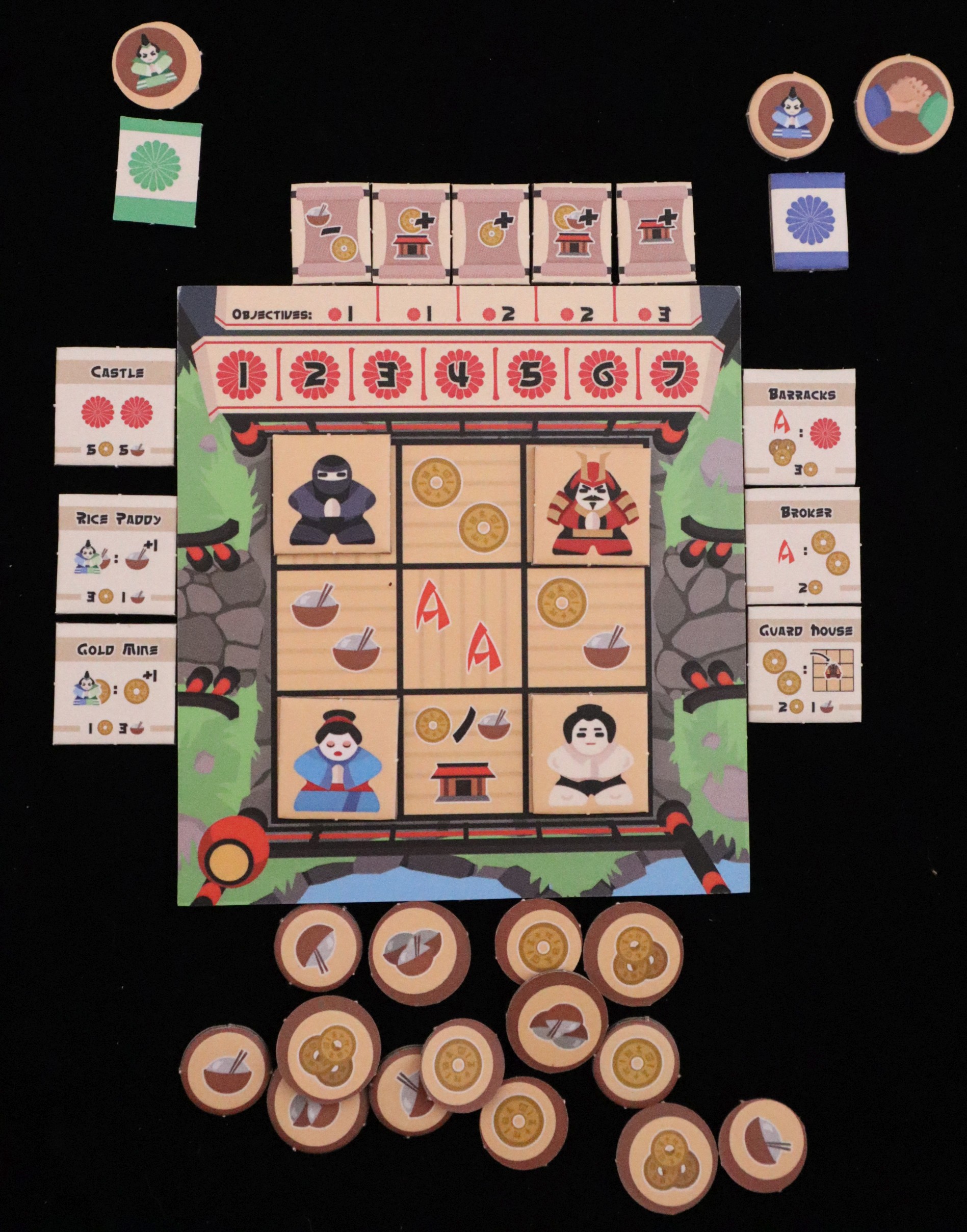
- Place the board into the between the player and randomly place the four meeple on the four corners of the board.
- Randomly select five objects to place along the objective track across the top of the game board.
- Place three random buildings on the left and right side of the game board (six in total).
- Provide each player a Daimyo and score marker of a matching color.
- Select the first player by your preferred means; provide the second player the influence token.
Player Turn
Player turns are two easy steps.
- Move
- Take your daimyo marker and place it on an unoccupied meeple token (cannot place on the same meeple you previously were or where the opponent is currently). Select an adjacent (non-diagonal) open space to move to.
- If a player has the influence token, they may discard that token to remove the opponent's daimyo marker from a meeple to be able to use that turn.
- Resolve a Space
- Spaces will have a few options they provide based on the symbols shown such as providing a direct number of resources (Gold/Food), allowing for the build actions, and general actions.
- Gaining a Resource: If a space has Gold or Food icon on it, collect a number of that type of token from the supply equal to the number of symbols shown on the space you are on plus any additional you may gain from building perks. Players may have no more than 7 of each type of resource (so 7 Gold and 7 Food).
- While not defined in my rules, I assume the bottom middle build action square provides one of the two resources and the build action; so, the '/' means "or" in this case.
- Build: If you can pay the cost shown on the bottom of one of the available buildings, you may turn in those resources to claim that building. Some buildings provide an ongoing perk while others give a perk in exchange for spent actions (more on that next).
- Alternately, you can donate one of your buildings you have already built to the town to gain 1 VP. You will no longer own this building though, and it is remove from the game.
- Action: For each 'A' shown on a space, you may perform one of the Action options:
- Trigger an Objective: This allows you to trigger the scoring of the left most objective above the game board and award the winner the VP shown below the token; afterwards, flip the token over indicating it has been scored. Obviously, you only want to do this when you are currently eligible to win it. Objectives range from having the most Food, owning the most buildings, owning buildings that cost the most money to buy, and so no. All of those are clearly described on the rules sheet so I won't go into those. They are very straightforward though.
- Activate a Building: Some buildings will have an "A" listed on them followed by a ":" and some additional symbols. This means by spending an action, you gain those perks such as gain food, gold, cheaper Donations, cheaper trading, or even the special Guard House that will let you block off a square on the board.
- Trade: You may trade pairs of resources for a single of the other resource. You may trade two Gold for one Food, four Food for two Gold, and so on. There is a building that allows for a 1:1 trade of resources.
- Donate: You can donate five of a resource to the town to gain a VP; there are buildings that improve this feature as well.
- Gaining a Resource: If a space has Gold or Food icon on it, collect a number of that type of token from the supply equal to the number of symbols shown on the space you are on plus any additional you may gain from building perks. Players may have no more than 7 of each type of resource (so 7 Gold and 7 Food).
- Spaces will have a few options they provide based on the symbols shown such as providing a direct number of resources (Gold/Food), allowing for the build actions, and general actions.
Move on to the next players turn. Play continues until one of the end game conditions are triggered.
Game End
The game ends immediately if one of the following end games conditions are met:
- One player has reached seven victory point.
- The final objective is scored.
Whoever has the most victory points is the winner! In the case of a tie, if the second player still has the influence token, they are the winner. Otherwise, whoever has the most resources is the winner.
Advance Rules
Once you have a good feel for the game, there are some additional rules you can optionally play with to add some variety and additional strategy. I won't go into the additional rules, but essentially, each of the Meeples Tokens gain additional movement options for a cost. You also include the Advanced Objective tokens. Here are how the Meeple Tokens optionally move.
- Sumo Meeple: Costs 2 Food to push an adjacent meeple into an empty space and move into the space they open leave.
- Ninja Meeple: Costs 2 Gold to swap places with another meeple and resolve the Ninja's space.
- Geisha House: Costs 1 Food and 1 Gold to remove any Daimyo marker from the Geisha then move the Geisha as normal.
- Samurai Meeple: Costs 1 Food and 1 Gold to move diagonally.
These are 3 levels for how to use these advanced rules so experiment to find which mode you prefer; essentially, the modes are whether optional moves are free, cost the listed resources, and how many will have access to the advanced moves.
Final Thoughts
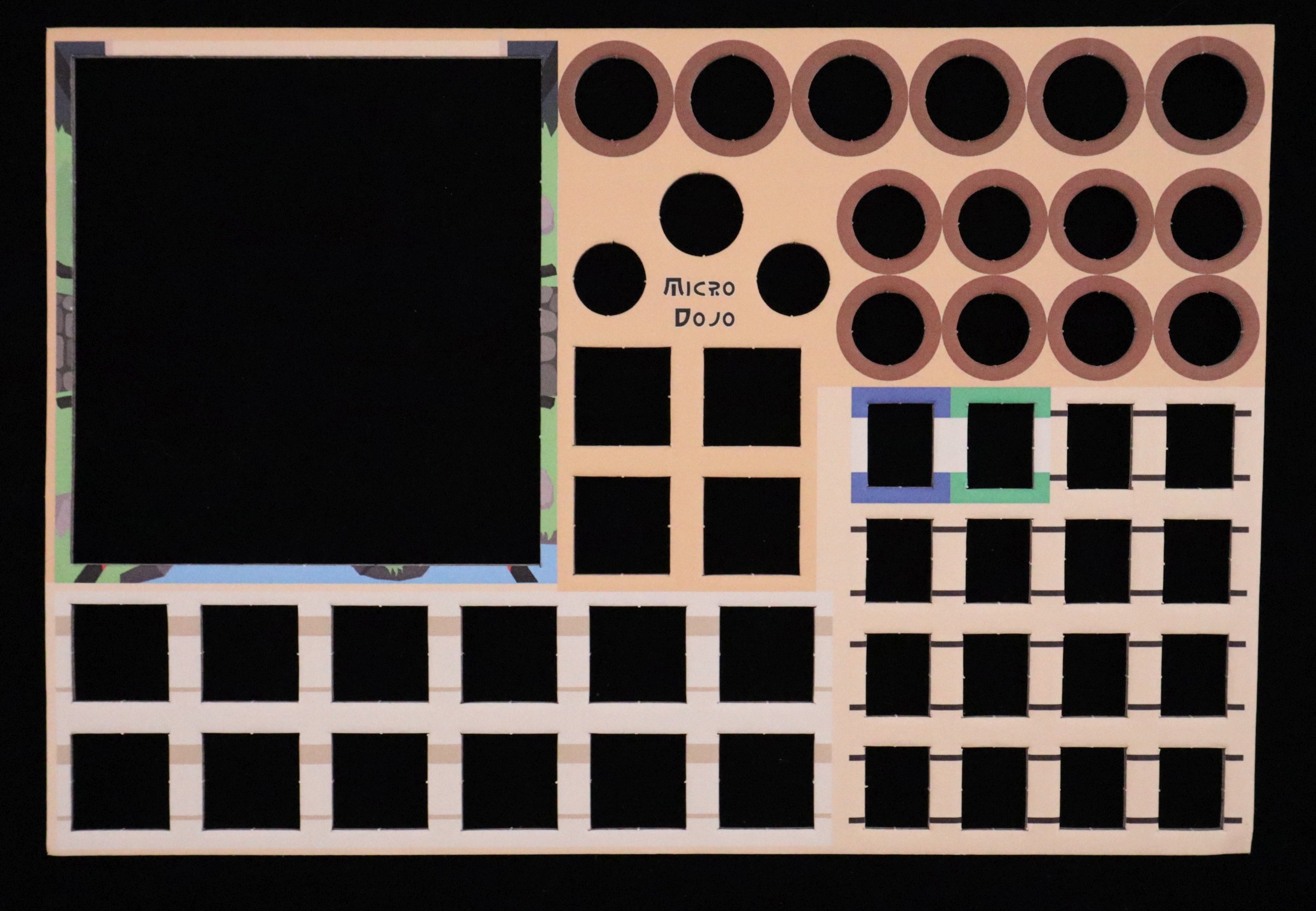 The name is definitely fitting for this game; I love how compact this game is and how it all comes on a single punch board (minus the folded paper rules) that can fit into a single padded envelop for shipping. This makes the game very affordable and compact after punched out; it can all fit into a single small ~4x5in plastic bag. I would really like to see it come with an optional cloth bag add-on or maybe a stretch goal if the cost of getting one embroidered was cheap enough, and the campaign did well enough to justify such a cost.
The name is definitely fitting for this game; I love how compact this game is and how it all comes on a single punch board (minus the folded paper rules) that can fit into a single padded envelop for shipping. This makes the game very affordable and compact after punched out; it can all fit into a single small ~4x5in plastic bag. I would really like to see it come with an optional cloth bag add-on or maybe a stretch goal if the cost of getting one embroidered was cheap enough, and the campaign did well enough to justify such a cost.
I have also watched the designer, Ben talking about this game a lot in many Facebook groups; he truly is passionate about this game and making sure it is successful. I would say of all of the Kickstarters we have supported, he has probably been one of the most vocal and open to suggestions from the community. The most recent feedback was regarding an icon used in the game and the font. Both were very nice looking but had some cultural impacts he was not aware of. After further discussions and feedback, he implemented some changes to address these concerns. This is why I know there will be some changes in the final designs of the game. It makes it easier for me, as a reviewer, to suggest people to go and check out a game when the designer is clearly passionate about their game and not just trying to turn a quick buck.
So, there are a few minor drawbacks with a project this size. First off is literally the size; this game will not be great for those with poorer eye sight as some of the icons will be hard to read. This is something that maybe could be overcome by changing some of the colors a little bit so the graphics pop a little bit more because the Gold and Food sort of blend in with the scrolls on the Objective Cards. I also sort of wish the double-sided board had a different arrangement of icons rather than just repeating the same arrangement; this would have increased the replay factor with very little work though it would need playtesting.
There are a few minor rules that should be tweaked for clarity as well; there have been a few digital revisions to the rules since I received my prototype so many of these may have been addressed in the rules and components already. Again, all very minor and all things that can be addressed and really don't impact gameplay anyways.
Overall, I really enjoyed this game. It is quick, simply, and really compact. I hope the game is successful and able to add in some nice stretch goals and allow for future projects from the creator. If the theme speaks to you and you like the idea of a quick and compact strategy game like this, I highly recommend checking out the Micro Dojo Kickstarter when it goes live on May 10, 2021. There will also be an initial allotment of copies ready to ship out after the Kickstarter the Kickstarter ends for those who like quicker gratification with their purchases. 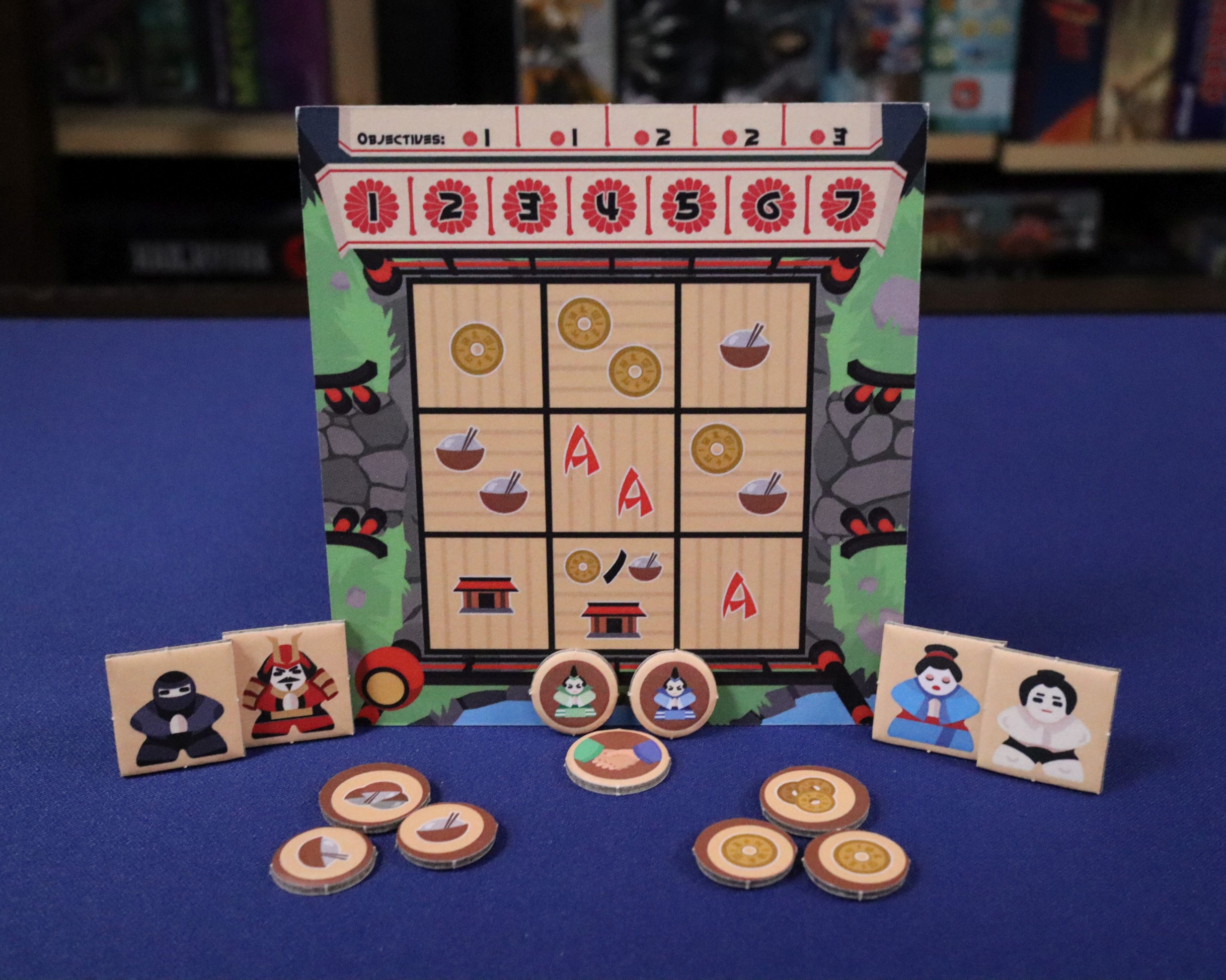
Links/Media
Micro Dojo Board Game Geek Page
Disclosure
We received the prototype in order to write an honest review; all reviews reflect the honest opinions of the writer.
